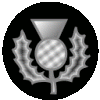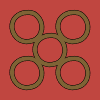| 9th Army Corps | |
|---|---|
| Active | 1877-1918 |
| Country | |
| Branch | |
| Size | ~20,000 |
| HQ | Kiev |
| Engagements | |
The 9th Army Corps was an Army corps in the Imperial Russian Army.
| 9th Army Corps | |
|---|---|
| Active | 1877-1918 |
| Country | |
| Branch | |
| Size | ~20,000 |
| HQ | Kiev |
| Engagements | |
The 9th Army Corps was an Army corps in the Imperial Russian Army.
| This article about a specific military unit is a stub. You can help Wikipedia by expanding it. |
| This Russian history–related article is a stub. You can help Wikipedia by expanding it. |

The 9th (Scottish) Division, was an infantry division of the British Army during World War I, one of the Kitchener's Army divisions raised from volunteers by Lord Kitchener to serve on the Western Front during the First World War.

The 14th (Light) Division was an infantry division of the British Army, one of the Kitchener's Army divisions raised from volunteers by Lord Kitchener during the First World War. All of its infantry regiments were originally of the fast marching rifle or light infantry regiments, hence the title "Light". It fought on the Western Front for the duration of the First World War.
The division was disbanded by March 1919, and was not reformed in the Second World War.
The 27th Division was an infantry division of the British Army raised during the Great War, formed in late 1914 by combining various Regular Army units that had been acting as garrisons about the British Empire. The division spent most of 1915 on the Western Front in France before moving to Salonika where it remained with the British Salonika Army for the duration of the war. In 1916 its commander Hurdis Ravenshaw was captured by an Austrian submarine whilst sailing to England. In 1918 in Salonika the division took part in the Battle of Doiran. It carried out occupation duties in the Caucasus in the post-war before being withdrawn from the region in 1919.

The Third Army was a field army of the British Army during World War I that saw active service on the Western Front throughout the war.

The 21st Division was an infantry division of the British Army during World War I, raised in September 1914 by men volunteering for Lord Kitchener's New Armies. The division moved to France in September 1915 and served on the Western Front for the duration of the First World War.

The 32nd Division was an infantry division of the British Army that was raised in 1914, during the First World War. The division was raised from volunteers for Lord Kitchener's New Armies, that was originally made up of infantry battalions raised by public subscription or private patronage. The division was taken over by the War Office in September 1915. It served in France and Belgium in the trenches of the Western Front for the duration of the war.

The 33rd Division was an infantry division of the British Army that was raised in 1914, during the First World War. The division was raised from volunteers for Lord Kitchener's New Armies, that was originally made up of infantry battalions raised by public subscription or private patronage. The division was taken over by the War Office in September 1915. It served in France and Belgium in the trenches of the Western Front for the duration of the war. The division's insignia was the "double-three" from a set of dominoes.

The First Army was a field army of France that fought during World War I and World War II. It was also active during the Cold War.
The 41st Infantry Division was a French Army formation during World War I and World War II.
The 28th Division was an infantry division of the British Army raised for service in World War I.
The 26th Division was an infantry division of the British Army during World War I. The division was created in September 1914 from men volunteering for Lord Kitchener's New Armies and was the last division to be raised under the K3 enlistment scheme. Although the 26th Division began to assemble in September 1914, it was not fully deployed on the Western Front until the following year. In November 1915, the division was redeployed to the Macedonian Front, where it remained until the end of the war.

Nikolay Aleksandrovich Kashtalinsky was a general in the Imperial Russian Army during the late 19th and early 20th centuries. He fought in the Russo-Turkish War (1877-1878), Russo-Japanese War of 1904-1905, and in World War I.

The 58th Division was an infantry division created in 1915 as part of the massive expansion of the British Army during World War I. It was a 2nd Line Territorial Force formation raised as a duplicate of the 56th Division. After training in Britain, the division joined the British Expeditionary Force (BEF) on the Western Front in 1917. It saw action at the battles of Arras and Passchedaele in 1917 and the German Spring Offensive in 1918. It then took part in the Battle of Amiens and the final Allied Hundred Days Offensive of the war. The division was recreated during World War II as an imaginary 'deception' formation.
The 10th Army Corps was an Army corps in the Imperial Russian Army.

The 12th Army Corps was an Army corps in the Imperial Russian Army.
The 15th Army Corps was an Army corps in the Imperial Russian Army.
The 21st Army Corps was an Army corps in the Imperial Russian Army.
The 23rd Army Corps was an Army corps in the Imperial Russian Army.
The 25th Army Corps was an Army corps in the Imperial Russian Army.

The 35th Army Corps was an Army corps in the Imperial Russian Army.